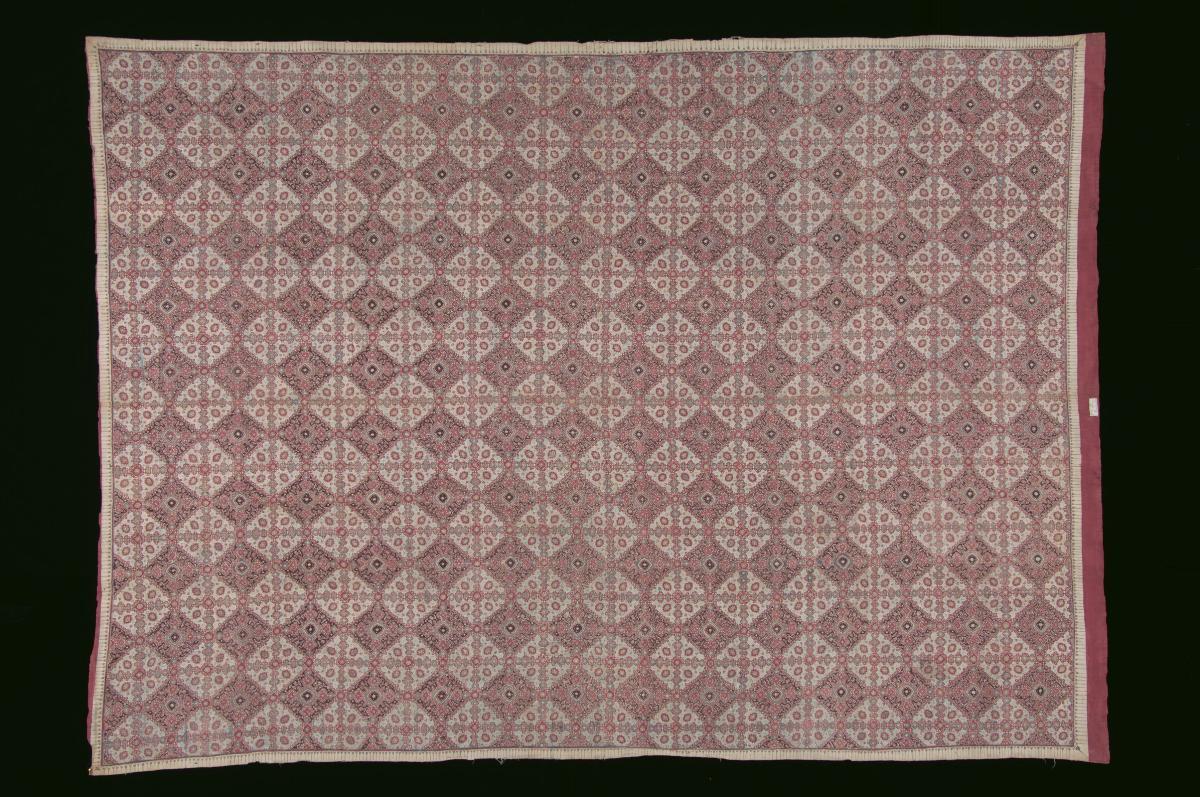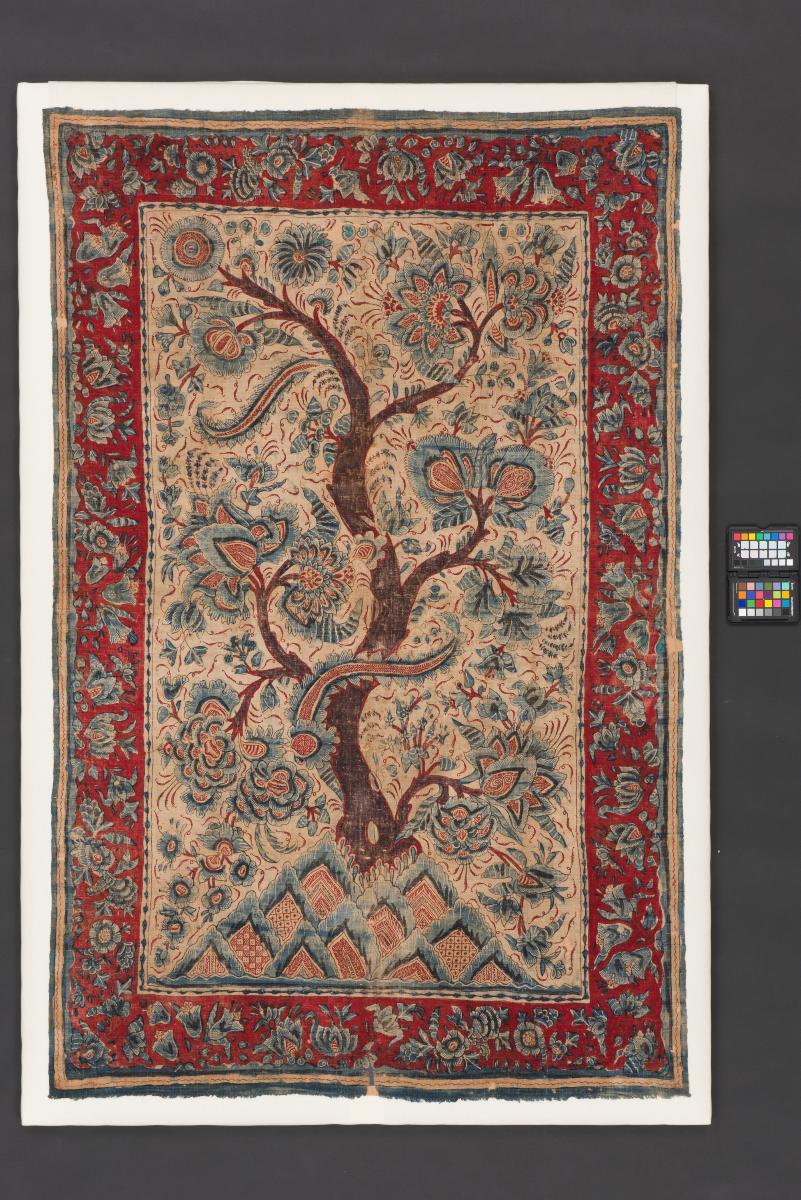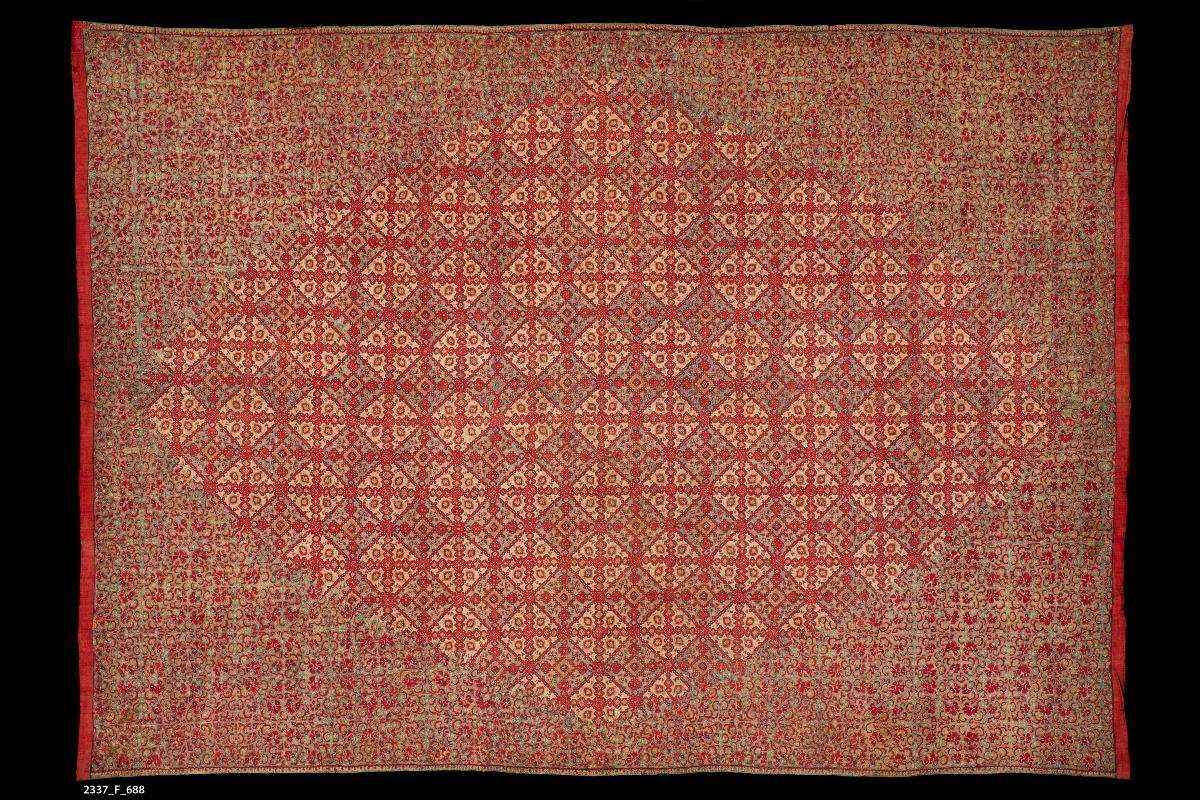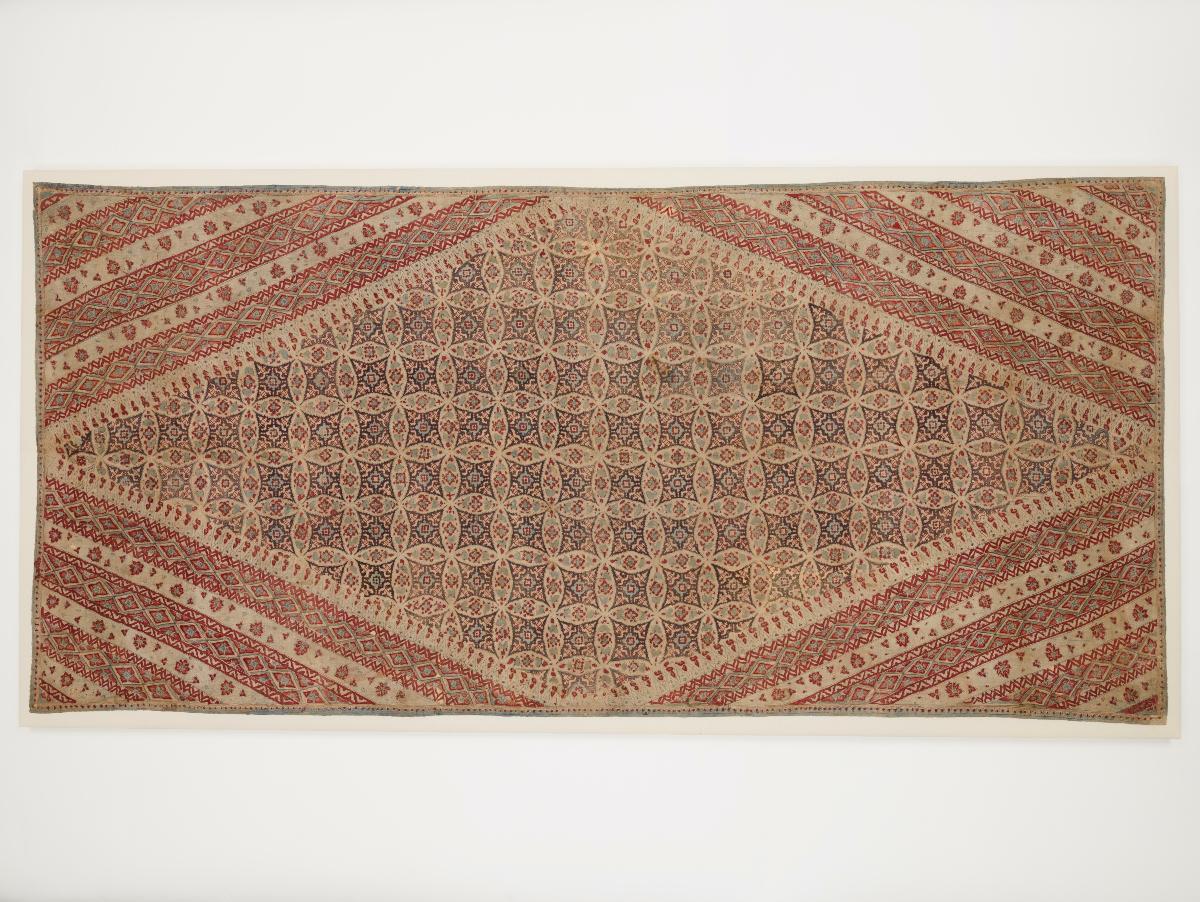Trade cloths from India had a strong influence on the development of Southeast Asian textiles. This cloth features designs of diamond shapes formed by interlocking lattices of vertical, horizontal and diagonal lines. These designs evoke similar patterns found in later Javanese batik as well as Sumatran and Peninsular songket textiles. When Indian textiles began to disappear from the marketplace, it is thought that local textile makers began producing cloth to make up the shortage. It is likely that they borrowed patterns and motifs from earlier Indian examples.This textile is a fine example of the Indian cotton textiles traded in large quantities across Southeast Asia until the early 19th century. It was produced in one of the textile-producing towns that dot the Coromandel Coast of southeast India and was most likely intended for the Sumatran and Javanese markets. Sumatran nobles wore this type of cloth for important royal ceremonies such as weddings or used them as decorative canopies or hangings. It is a rare example of a cloth of this type made from a single loom width. Most of these cloths were made by sewing two narrower pieces together.















